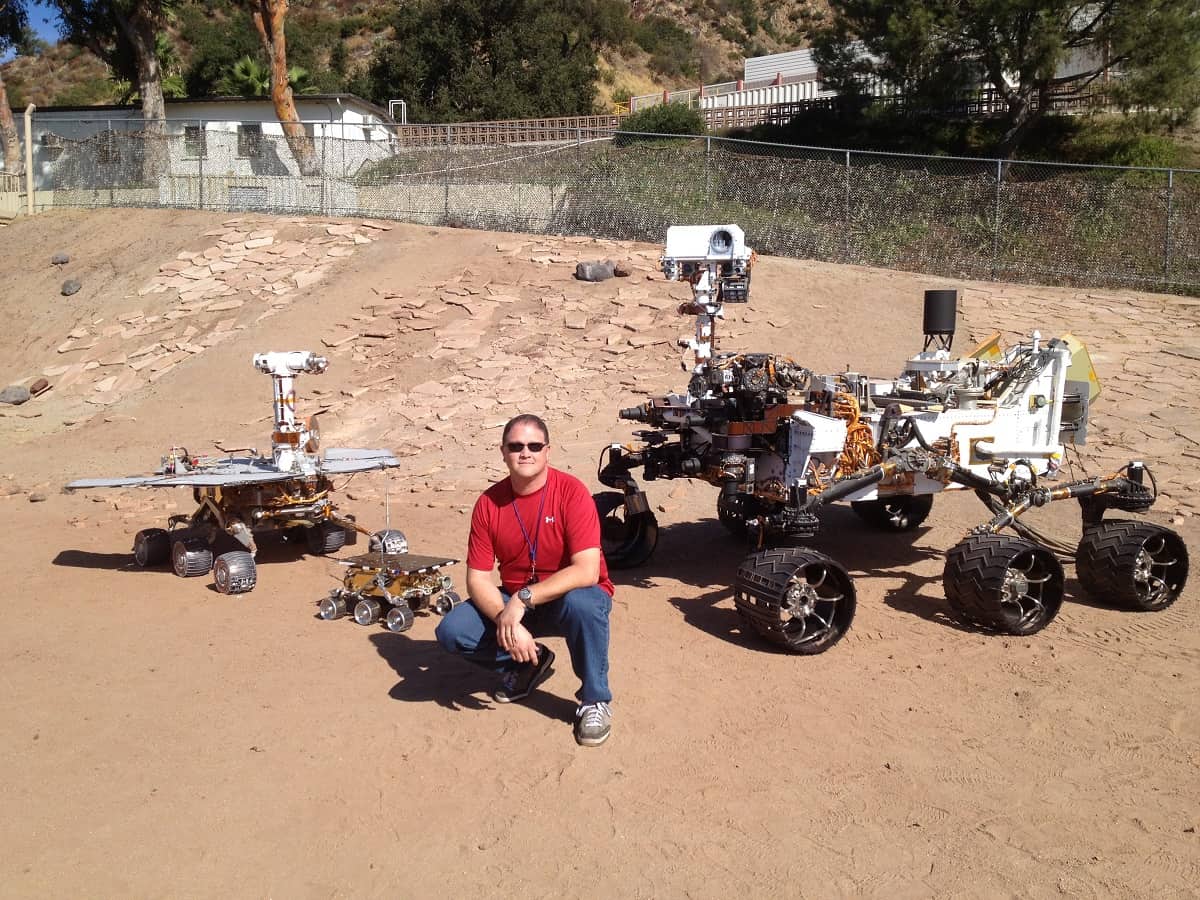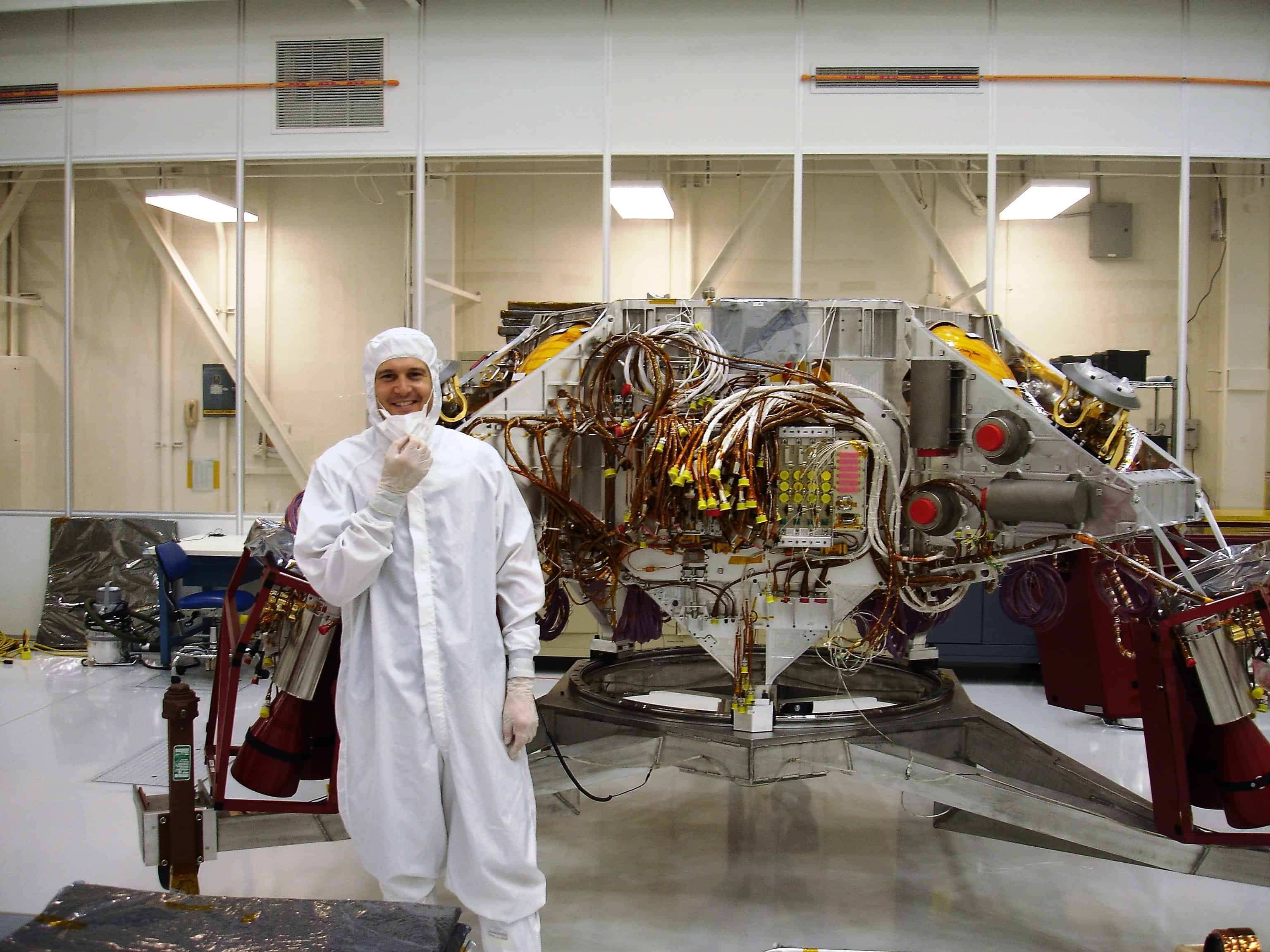How does one go about making contact with two veteran NASA technicians who were raised and educated in Costa Rican public schools and have contributed to some of the most important space missions of the past quarter century?
In my case, it was a vacation trip to Punta Leona and a minor accident my father had while snorkeling off Playa Blanca.
After my dad received first aid from the Punta Leona lifeguards, we decided to drive to the nearby town of Quebrada Ganado to buy some ointment and extra bandages. After making our purchases at the pharmacy, we went to the soda next door for lunch. As we waited for our casados, a friendly woman approached me with great curiosity and asked, “Do you work for NASA?” She had spotted a NASA sticker on a car parked out front and wanted to know if it might be mine.
It was. I informed her that I do collaborate with NASA, Jeanette Benavides, the Ad Astra Rocket company and other organizations to promote youth-oriented space science education projects. She proudly told me that her two sons work at NASA’s Jet Propulsion Laboratory in California and that she had witnessed a few NASA rocket launches herself.
I was intrigued and slightly puzzled as I had never heard of these two men, despite my past writings about Ticos at NASA. But thanks to this chance encounter with proud mom Claudia Fernández Oreamuno, my running list of Costa Ricans who have made their mark at NASA now has two more distinguished names: Alejandro (Alex) and Joseph Mora.
The missions the Mora brothers have contributed to reads like an encyclopedia of NASA’s most successful and exciting space endeavors of the past two decades. The list includes the Cassini space probe, which orbits Saturn; the Chandra and James Webb Space telescopes; the Dawn probe which orbits dwarf planet Ceres; and the much celebrated Mars Exploration Rovers. One could say without exaggeration there are Costa Rican fingerprints all over our solar system.
Read also: Behind the scenes at NASA – meet Costa Rican space pioneers
In 1966 and 1967, respectively, Joseph and Alejandro (Alex) Mora were born in Rahway, New Jersey, to Costa Rican parents. In 1971 their family moved back to Costa Rica. The Mora boys attended elementary school at the Escuela República de Panamá and high school at the Liceo San Antonio, located in the San José canton of Desamperados.
Alejandro recalls, “I was always fascinated with aircraft and space flight. I grew up in Costa Rica during a time when going to Juan Santamaría International Airport to see planes taking off was a treat. Reading about the Space Shuttle was the stuff of dreams; my bedroom walls were covered in pictures of it found in magazines and newspapers.”
In 1984 the Mora family returned to the United States and settled in North Hollywood, California; Joe had already graduated from high school in Costa Rica, but Alex finished high school in California. Alex then enlisted in the Air Force and trained as a Jet Engine Mechanic, while Joe worked for 16 years in the commercial airline industry as a structural repair technician. Both of these career paths led them to NASA.
“I landed a job at the Marquardt Company, an aerospace firm which built rocket engines for space applications, such as space probes, satellites and systems for the Space Shuttle,” Alex said. “I would periodically be assigned to customers to perform repairs or service hardware. It was on one of these occasions that I was sent to the Kennedy Space Center to service the Space Shuttle’s Reaction Control System. I was in awe; to finally see our engines attached to flight-ready hardware that would soon travel to space was one of my life’s seminal moments. When the opportunity presented itself for a position at NASA’s Jet Propulsion Laboratory, I did not hesitate to join the team.”
In October 2018, NASA’s James Webb Space Telescope will be launched into orbit at the European Spaceport in French Guiana. This telescope is the successor to the Hubble and one of its tasks will be to study exoplanets ( planets that orbit stars other than our own). As I conducted my interviews with Joseph and Alex, they told me how busy they have been these days getting the new telescope ready for its launch date.
If life does exist in other solar systems, the James Webb telescope will be a key tool in helping us confirm it. And as we explore our solar system and universe we should take a moment to thank the Mora brothers and all space agency technicians for their great work.

My gratitude, too, goes out to their mother for connecting the dots in a Central Pacific soda. Thanks to her conversation with me, I was eventually able to speak with Joe and Alex about their NASA careers. Excerpts follow.
Who inspired you to pursue the type of work you do at NASA?
AM: More than anyone, my father. He was very mechanically oriented, taught me how to use tools and to reason how to solve problems. This gave me the confidence to purse the jet engine mechanic field that eventually would lead me into the aerospace industry.
JM: His name was Rodrigo “Rudy” Lopez Villiers. He was my high-school English teacher [in Costa Rica]; he had a very easygoing personality and was willing to talk to you no matter the subject, whether it was about school or life in general. He always encouraged us to do and be the best that we could be, saying that it was not a choice, but a must! Sadly, Rudy passed away a few years after I came back to the United States. To this day, I still think about his words of encouragement… they played a part of whom I am today.
What is your favorite part about working for NASA, and which have been your favorite missions to work on?
AM: In my opinion the best part of working for NASA/JPL is the diversity of work. No two projects are identical. We are not only part of the development of cutting-edge technology but we also get to see it implemented on missions and eventually in everyday life. So far, my favorite mission has been Mars Science Laboratory.
JM: All of it! I get to participate and collaborate on experiments, work, design, test and install instruments and finally after months (and most of the time years) of hard work and effort, be packed on a payload of a 300-foot rocket and watch it take off to the skies. Man, it’s an amazing feeling of accomplishment and pride! In addition, the thought of all that work that could possibly change humanity for the best.
My favorite program that I worked on was the Planck Mission and Mars Science Laboratory (MSL). On the MSL, I worked for four years in a JPL basement lab from 6am to 6pm, five/six days a week, trying not to miss deadlines and slow down other teams needing my finished work. One must remember that Mars is closest to Earth approximately every 22 months and you do not want to miss that window of opportunity!
I worked on all the primary sections of the spacecraft (cruise stage, descent stage and rover), specifically the fluid loops that kept instruments and electronics at a stable temperature. Part of the job also required me to spend six months at the Kennedy Space Center in Cape Canaveral Florida to reassemble, test and stow the payload into the rocket for launch operations.
What advice can you give young people in Costa Rica about following in your footsteps to work as Technicians for NASA?
AM: My advice would be to not neglect your studies, especially STEM classes. In this type of work, a solid understanding of physics and math will be a great asset to have. Always be on the lookout for opportunities for advancement. My very wise sister would say, “Don’t wait for the perfect opportunity; make the opportunities that present themselves work for you.”
JM: Never, never, never give up on your dreams; never… no matter how far, difficult or unreachable they seem, life has a funny way of fulfilling them!
Bruce Callow is a Canadian communications consultant and educator who has resided in Costa Rica since 1992. He was the Communications Officer at the British Embassy for 9 years. A member of the Globe International Scientists’ Network, Bruce collaborates with Dr.Franklin Chang and the Central American Space Association (ACAE), and does space education outreach work on behalf of NASA.






